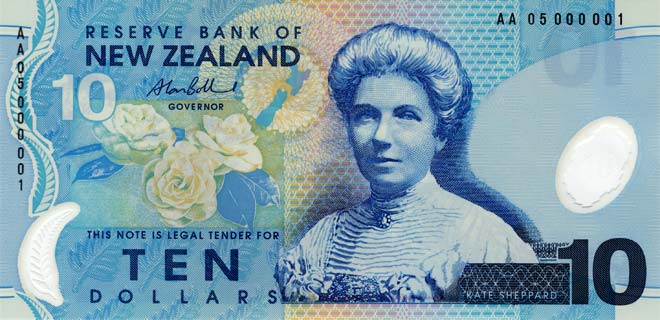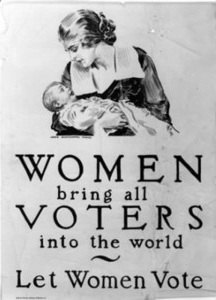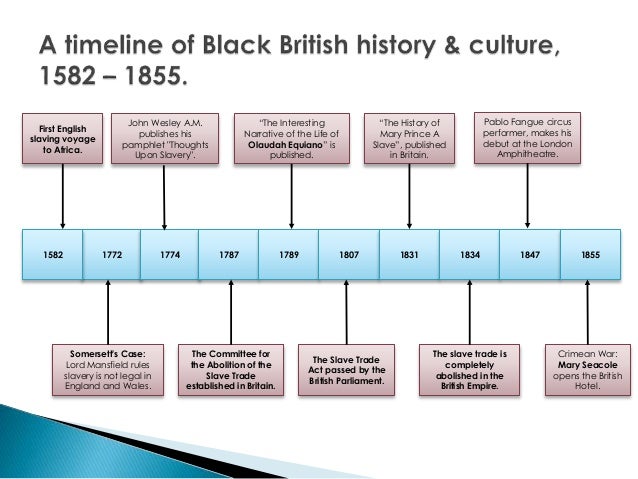Ironworks of Dillingen in Bavaria, Germany 1850

Topics on the Page
The Early Industrial Revolution
Liberalism
Child labor laws, and Social Legislation such as old age pensions and health and unemployment insurance
CROSS-LINK: Annie Besant and the London Matchgirls Strike of 1888
The expansion of voting rights in England and around the World
- Millicent Fawcett
- Emmeline Pankhurst
- New Zealand and Women's Suffrage
- Kate Sheppard
Women's Suffrage in the United States
- 19th Amendment to the U.S. Constitution
Slavery Abolition
- Timeline of Abolition
- Events that led up to Abolition
- Abolition of Slave Trade
- Abolition of Slavery
 AP World History Key Concept 5.3: Nationalism, Revolution and Reform
AP World History Key Concept 5.3: Nationalism, Revolution and Reform
Focus Question: What was the impact of social and political reform movements in Europe?
 |
| Anti-Child Labor Political Cartoon, 1913 |
The Early Industrial Revolution
The early Industrial Revolution set in motion powerful forces for change and the clash of these forces shaped European history in the first half of the nineteenth century.
The Industrial Revolution threatened the social spheres of both men and women, and public figures such as Friedrich Engels worried that industry "[unsexed] the man and [took] from the woman all womanliness."

In a critique of industrialism and capitalism directed towards women, Engels wrote:
"The moral consequences of the employment of women in factories are even worse. The collecting of persons of both sexes and all ages in a single workroom, the inevitable contact, the crowding into a small space of people, to whom neither mental nor moral education has been given, is not calculated for the favorable development of the female character. The manufacturer, if he pays any attention to the matter, can interfere only when something scandalous actually happens; the permanent, less conspicuous influence of persons of dissolute character upon the more moral, and especially upon the younger ones, he cannot ascertain, and consequently cannot prevent. But precisely this influence is the injurious. The language used in the mills is characterized by many witnesses in the report of 1833, as 'indecent,' 'bad,' 'filthy,' etc. It is the same process upon a small scale which we have already witnessed upon a large one in the great cities."
- Friedrich Engels, Condition of the Working Class in England (1845)
Check out this resource for a comprehensive and balanced take on women's role in the workplace and their changing lifestyle during the Industrial Revolution in Great Britain, looking both at historical interpretations and census data.
 Click here to watch a Crash Course History YouTube video about the Industrial Revolution in order to learn more information!
Click here to watch a Crash Course History YouTube video about the Industrial Revolution in order to learn more information!
Revealing the Industrial Revolution offers multiple interactive games that gives students an opportunity to learn more about the Industrial Revolution and to give them a different way of understanding the material!
Below is a picture of an assembly line for the Ford Motor Company during the Industrial Revolution

Liberalism
Liberalism was a political philosophy that emerged from the Enlightenment and the French and American Revolutions that held that people should be free and should enjoy basic rights and liberties.
- The American Bill of Rights is a classic statement of liberal ideas with its statements about the rights of speech, assembly, and press.
- Liberals believed in the separation of church and state and in freedom from arrest without protection the laws.
- Importantly, liberals did not support wide democracy for everyone.
- They held the right to vote belonged to white men who held property.
- Liberalism was popular with the emerging middle classes who wanted ways to assert their power in society and not be controlled by aristocrats and kings.
John Locke's ideas on the way that government should be run were very influential to European society. He stressed that every man is innately endowed with certain natural rights and their right to property. He claimed that the government challenges these rights. These ideas were incredibly important to European liberalism and lead to future liberal thinkers.

To the right is a picture of John Locke and attached is a website explaining his ideas, accomplishments, and impacts he had on liberalism.
The French Revolution, in particular, was a major test of this movement, as France had a long history of feudalism and monarchy that was threatened by a wave of Enlightenment thinkers that threatened nearly every major institution and social convention in French society.
- French revolutionaries challenged the nobility, the Catholic Church, the monarchy, the practice of slavery, the treatment of religious minorities, and the judicial system all on the basis of liberal Enlightenment thinking and the natural rights of man.
- The Abbé Sieyès strongly advocated for the rights of the individual and challenged rights of the nobility in his revolutionary pamphlet, What is the Third Estate?, although he would not prove as radical as other French revolutionaries in the future.
- At the same time, Sieyès still did not fully advocate for the rights of women and he acknowledged that political rights were not universal.
See National Standards for Civics and Government (p. 26) for a further explanation of liberalism and classical republicanism. In this definition, "classical republicanism emphasizes the ideal of the common good while liberalism stresses individual rights."
The impact of liberalism can be seen in current European and North American governments. It led to the reduction or end of monarchies in Europe, or the creation of conditions that led to the end of the monarchical rule, for example, France in the late 18th century or Russia in the early 20th century. With some reforms--most notably, reforms in who can vote--liberalism was part of the foundation for constitutional democracy. Without this philosophy, and its resulting documents, we might not have our democracies today.
Click here for an AP European History page that provides thousands of links to great websites and primary source documents about European history including the rise of Liberalism and Enlightenment thought.
A child working as a chimney sweep, 1828

Child Labor Laws and Social Legislation
Children made up a large proportion of the early industrial workforce in the UK, particularly in cotton mills where their small size allowed them to move under machines to retrieve loose cotton.
- By 1838, children made up 28 percent of the cotton factory workforce while being paid only 1/6 to 1/3 that of a male worker (The Essential World History, 2005, p. 397).
- Children as young as five or six years old worked in factories where they were subject to unhealthy working conditions, dangerous equipment, frequent punishment, and low wages.
Click here for an overview of child labor issues from the UK National Archives.

Click here for Part 1 of The Children Who Built Victorian Britain.
Click here for Part 2 of The Children Who Built Victorian Britain.
Click here for Part 3 of The Children Who Built Victorian Britain.
Click here to watch a History Channel video about child labor laws and the fight reform these laws in order to protect children.
The Factory Acts
The “Factory Acts” in Britain little by little improved the working conditions of children and gradually restricted how much children were allowed to work.
- The first Factory Act was passed in 1802 and laid out the rules for employing apprentices in cotton and wool mills. The rules were not very strict by today’s standards. For example, apprentices’ work hours were limited to “only” 12 hours a day.
- The 1833 Factory Act tried to establish a standard work day in textile mills for children working there. Children aged 9-13 could not work more than 9 hours a day, children aged 14-18 not longer than 12 hours, and children were not allowed to work overnight.
- The The Mines Act of 1842 prohibited all children under the age of 10 from working in mines or doing colliery work.
- The 1844 Factory Act was important because it reduced work hours even further and also mentioned women for the first time.
- Children aged 8-13 could not work more than 6½ hour shifts, and only do two shifts a day, totaling 10 hours maximum, on alternate days. The 1844 Act also set rules for medical care, reporting of accidents, and school attendance.
- There were 8 Factory Acts in all. The impact of this early workers' rights legislation is felt through the present-day.
 British Social Reform Timeline
British Social Reform Timeline
 See Also: Interactive and Primary Source Documents about the 1833 Factory Acts
See Also: Interactive and Primary Source Documents about the 1833 Factory Acts
Voting Rights and Women Suffrage in England and Around the World
Millicent Fawcett, 1913

Women in the United Kingdom did not get the right to vote until 1918 (full voting rights came in 1928).
The struggle for political rights, called the suffrage movement, started years earlier with Millicent Fawcett's founding of the National Union of Women's Suffrage Societies. This group organized marches and wrote letters to politicians lobbying for women's suffrage.
 Here is a video of the reveal of a statue of Millicent Fawcett in London in April of 2018 from the Washington Post!
Here is a video of the reveal of a statue of Millicent Fawcett in London in April of 2018 from the Washington Post!
Click here to read Fourteen Reasons for Supporting Women's Suffrage developed by Millicent Fawcett and National Union of Women Suffrage Societies.
 Timeline of Women's Suffrage
Timeline of Women's Suffrage
Emmeline Pankhurst, 1909

Emmeline Pankhurst formed the Women's Social and Political Union in 1903, better known as the Suffragettes. The Suffragettes often resorted to more aggressive forms of lobbying, such as vandalism and arson, and many members served time in prison.
This video tells the history of the Suffragettes in an entertaining fashion, that will engage the students, and help them remember the important history as well.
New Zealand and Women's Suffrage

Women's suffrage was a worldwide movement and phenomenon.
The first country in the world to grant women's voting rights was New Zealand in 1893. The founder of the Women's Christian Temperance Union in New Zealand was Kate Sheppard, a leader who spoke publicly and wrote extensively on the topic of women's voting rights.
She now appears as a national figure on New Zealand's $10 note (see left). The white camellia flower in the background was a flower given to Parliament members who supported New Zealand's suffrage bill and have since become an icon for women's suffrage.
This site shows when European countries gave women the right to vote.

Above is a picture from the movement and includes a link to a website with a brief history of women's suffrage in Europe.
Women's Suffrage in the United States
The impact of the suffrage movement was felt world-wide. It helped to foster a vibrant women's rights movement across the Atlantic to the United States, culminating in the passage of the 19th Amendment to the U.S. Constitution in 1920, led by Elizabeth Cady Stanton and Susan B. Anthony.
This link provides images of the actual petition sent by Susan B. Anthony to Congress in 1874 in favor of women's right to vote.
 PBS provides a great lesson plan for teachers who are looking to teach about the women's suffrage movement in the U.S. This lesson plan is filled with several different documents that correlate with the movement and will help to show the similarities with the women's movement in Europe.
PBS provides a great lesson plan for teachers who are looking to teach about the women's suffrage movement in the U.S. This lesson plan is filled with several different documents that correlate with the movement and will help to show the similarities with the women's movement in Europe.
This lesson plan for Grades 6-12, is the fourth in a series of lesson plans that focus on expanding voting rights. The overall goal of the lesson is for students to explore the complicated history of voting rights in the United States. Two characteristics of that history stand out: first, more and more Americans have gained the right to vote. Second, over time, the federal government's role in securing these rights has expanded considerably.
After the lesson students will be able to:
- Understand that until the Nineteenth Amendment was ratified, many states denied women the right to vote
- Use primary and secondary sources to understand the ways that women advocated for the right to vote
- Evaluate the importance of the federal government in securing women's right to vote
 This video is a helpful representation and explanation about the emergence of women's suffrage in the United States from author John Green and his YouTube history series, "Crash Course."
This video is a helpful representation and explanation about the emergence of women's suffrage in the United States from author John Green and his YouTube history series, "Crash Course."
Text of the 19th Amendment to the US Constitution:
The right of citizens of the United States to vote shall not be denied
or abridged by the United States or by any State on account of sex.
Congress shall have power to enforce this article by appropriate legislation.
The Industrial Revolution as a catalyst for women's rights, rights for minorities, and factory workers in general. Here is a video on the same Triangle Factory Fire from PBS
Abolition of Slavery in Great Britain
Timeline:

Events that led to abolition:
- Slavery started to become economically unnecessary in Great Britain because of two reasons
- America becoming independent meant they could trade with other empires like France, which meant the remaining British slave colonies started to decline.
- The Industrial Revolution made it so Great Britain did not need slave produced goods. The Industrial Revolution allowed Great Britain to be more prosperous by ways that did not revolve around slavery.
- Slave revolts became more frequent to the point that the dangers of such revolts along with the cost to operate the colonies made it so that that the reward was not worth it
- 1832 - Reform in parliament removed 2/3 of those who supported slavery
- Religious groups and abolitionists started to advocate for the abolition of slavery.
Slave Trade Act of 1807:
- The first bill was proposed in 1791 but was rejected mainly do to many members of parliament having economic interest in the West Indies
- William Grenville, supporter of abolition, became Prime Minister and helped to get the slave trade abolished in all Great Britain
- The hope of the passed act was that it would indirectly start to wither away the institution of slavery
Slavery Abolition Act of 1833:
- Passed House of Commons in July of 1833 and then officially approved in August 1833
- The Act went into effect August 1, 1834
- It freed most of slaves in the British colonies with exception to British North America (Canada), India, and a few other territories.
- It only gave partial liberations to slaves but soon all slaves were liberated
- Long term effects of the act - The act made Canada a free territory resulting in thousands of fugitive and freed slaves from America taking refugee there.
- For a short video of the abolition of slavery in Great Britain, click here
 See Here: Primary Sources on Slave Resistance and Enslaved People's Narratives
See Here: Primary Sources on Slave Resistance and Enslaved People's Narratives
Sources
Books
Barzun, Jacques; From Dawn to Decadence: 500 Years of Western Cultural Life, 1500 to the Present; HarperCollins, New York; 2000
Gombrich, E.H.; A Little History of the World; Yale University Press, 2005; Dumont Literatur und Kunst GmbH und Co., Cologne, Germany, 1985
Web Sources
Looking at Victorian England (1837-1901) as a time for reform
http://www.bbc.co.uk/history/british/victorians/reforming_acts_01.shtml
On the industrial revolution in England
http://industrialrevolution.sea.ca/impact.html
Essay on child labor in Victorian England
http://www.victorianweb.org/history/hist8.html
Life of an industrial worker in Victorian England
http://www.victorianweb.org/history/workers1.html
The Lack of Social Security in Victorian England
http://www.victorianweb.org/history/work/eh3.html
a huge amount of info on society in Victorian England and the lives of the people
http://www.victorianweb.org/history/sochistov.html
Description of the match girls' strike
http://www.spartacus.schoolnet.co.uk/TUmatchgirls.htm
Profile of Annie Besant
http://www.spartacus.schoolnet.co.uk/Wbesant.htm
List of links to info on child labor, such as the Factory Acts
http://www.spartacus.schoolnet.co.uk/IRchild.htm</span>
Essay on the suffragettes
http://www.historylearningsite.co.uk/suffragettes.htm
Essay on Britain's Representation of the People Act, giving British women the right to vote
http://www.historylearningsite.co.uk/1918_representation_of_the_peopl.htm
Time line of Susan B. Anthony's life
http://www.susanbanthonyhouse.org/timeline.shtml
Biography of Elizabeth Cady Stanton
http://www.spartacus.schoolnet.co.uk/USAWstanton.htm
Interactive Constitution page on the National Constitution Center's web site
http://www.constitutioncenter.org/constitution/details_explanation.php?link=195&const=26_amd_19
Listen to LBJ give his 1964 Great Society speech
http://www.americanrhetoric.com/speeches/lbjthegreatsociety.htm</span>
Kate Sheppard and Women's Suffrage
http://www.teara.govt.nz/en/object/34611/kate-sheppard-on-the-10-note
Comments (0)
You don't have permission to comment on this page.